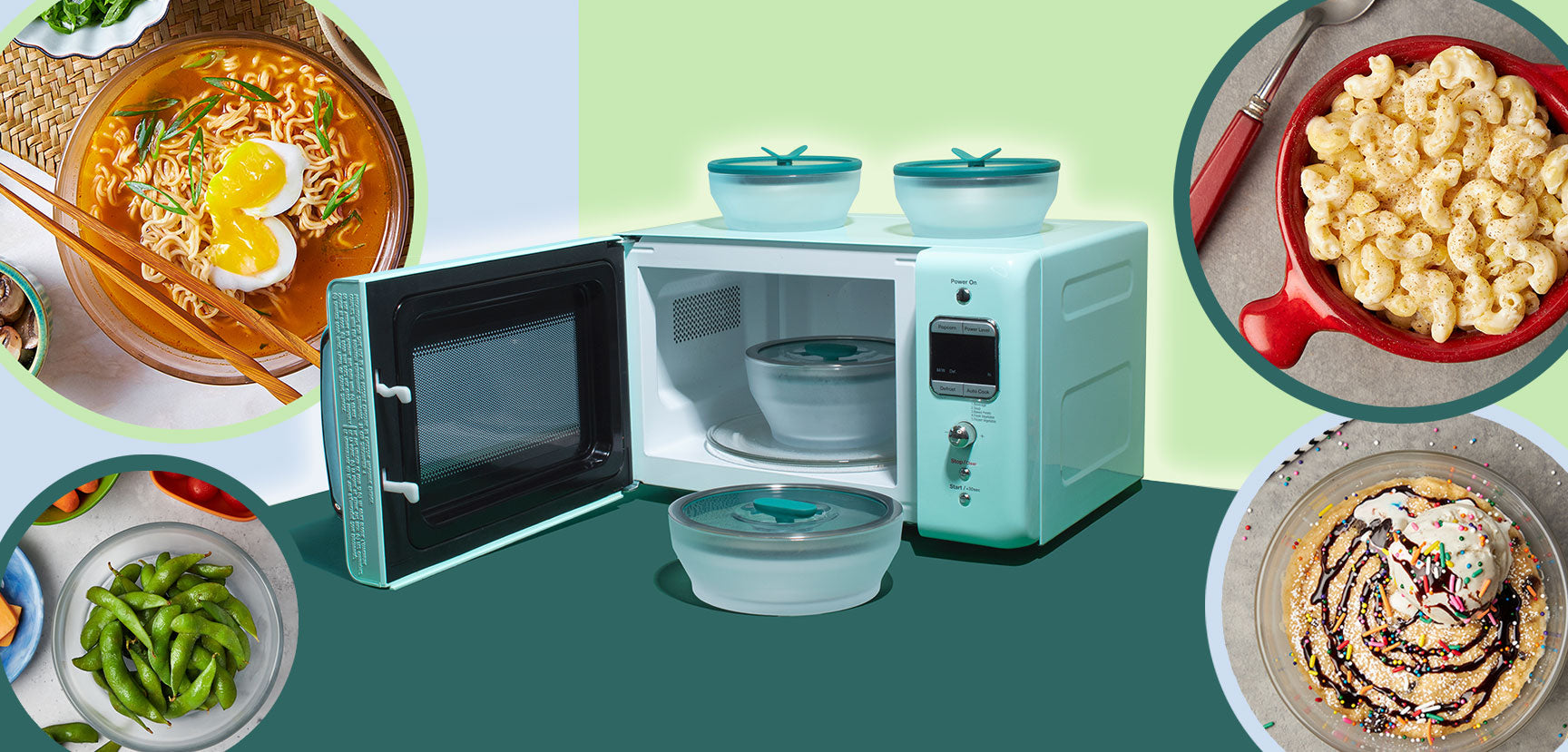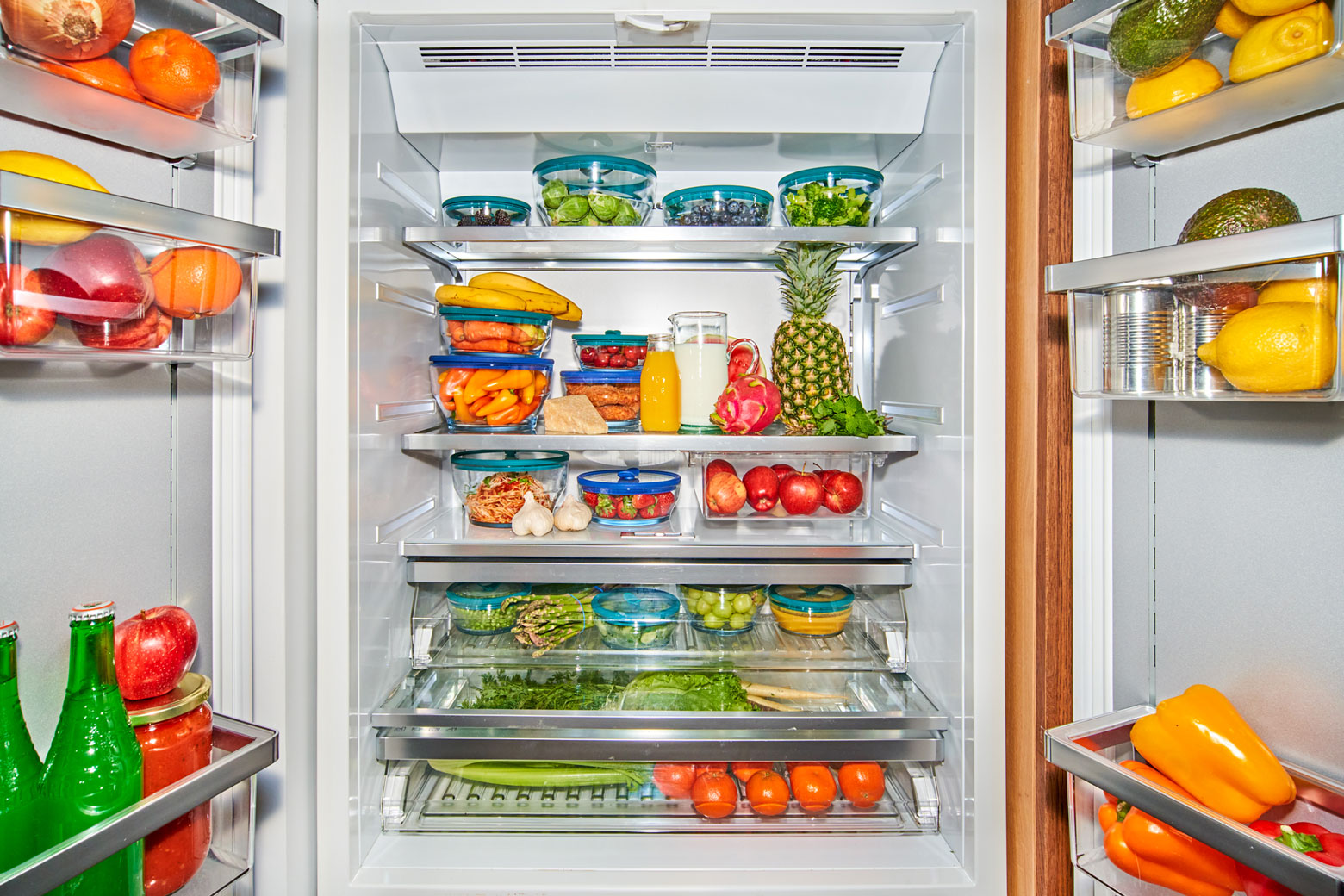Congrats, Grad! You did it! College is an exciting new chapter. You’re here to make friends for life, crack the books and live on your own— likely for the first time. There’s a lot to learn, and not all of it comes from inside the classroom. While it can be a challenge to adapt to a new routine, it’s important to stick to good habits where you can and that starts with healthy eating. Cooking good food in your college dorm room is easier than you think, and can save you money along the way.
While you may be tempted to eat all your meals in the dining hall, cooking in your dorm room offers many benefits: You can save money, protect yourself from allergens, and even learn the basic foundations of cooking! While you may plan to stop by the dining hall for a few meals per week, supplementing your daily diet with easy meals, snacks, and late-night sweets will keep you fueled all semester long.
It’s no secret that we love cooking food in the microwave at Anyday, and we have plenty of recipes for you to try once you’re set up in your new dorm room. We’re here to help with tips on things like choosing your dorm cooking tools and what to stock in your fridge and makeshift pantry.
Ready to get cooking? Read on for tips on how to cook in your dorm room (and save money!):
What kind of cooking equipment can be used in a dorm room?
Many universities have different rules and restrictions when it comes to cooking in your dorm room. It’s best to get a list of what’s allowed and what isn’t from your college before you choose your cooking equipment.
If you’re thinking, “I don’t even have a kitchen! I just have a mini fridge and a long list of forbidden appliances!” you are not alone. There are some tricky requirements when it comes to the things you can use for dorm room cooking. In order to prevent fire risk, many dorms do not allow appliances that have an exposed heating element. While items like air fryers, rice cookers, hot plates, and toaster ovens are typically prohibited, some dorms may allow a mini fridge and microwave or offer a communal kitchen space where these appliances can be used.
What kind of foods can you cook in the microwave in a dorm room?
Microwave ovens are a great option when it comes to cooking in small spaces. These appliances are allowed in most dorms because they are safe and come in many different sizes and wattages to fit your needs. While you may think that the microwave is just for reheating your leftovers, this powerful appliance can cook delicious food from scratch efficiently. It cooks food quickly and at low temperatures, retaining the food’s natural nutrients.
In fact, your microwave can do a lot more than you think: it can make fluffy rice, steamed broccoli, and even make crispy bacon and perfect poached eggs. Be sure to invest in a few microwave-safe glass dishes with airtight vented lids (like Anyday!) if you plan on cooking food from scratch, as plastic vessels are actually not safe for cooking food in the microwave.
If you are unsure of what appliances are allowed in your dorm, it is best to contact campus staff to make sure your items are within guidelines.
How to choose dorm room cooking equipment
It’s time for the fun part: Shopping for your cooking equipment. Once you’ve secured your list of approved appliances, it’s now time to get your microwave, cookware, and kitchen supplies. Choose items that will help you make the types of food you want to eat, such as blenders for smoothies and shakes, a panini press for sandwiches, and a microwave and microwave cookware for everything in between (pro tip: Many college campuses offer a microwave and mini-fridge rental program!). You’ll need to eat the food you cook of course, so buy a few sturdy plates, bowls, and some basic utensils, too.
You’ll be working with very limited storage, so choose items that are multipurpose and stack up well in a small drawer or cabinet.
Stock up on dish soap, sponges or towels, and a place to allow dishes to dry. Be sure to clean regularly as dirty dishes can cause harmful bacteria or unwanted pests. Plus, your roommate will be thankful you’re tidying up after you cook!

Above: The College Dorm Set
Best foods to stock in a college dorm room
Planning meals and snacks ahead of time doesn’t have to feel like another round of homework! If your pantry and freezer (if you have one) is properly stocked with the right ingredients, you can improvise a meal in minutes.
Consider stocking these long-lasting fridge and pantry goods in your dorm room:
- Pasta or noodles
- Salt and pepper
- A small bottle of oil
- A Dozen Cousins ready-to-reheat grain pouches
- Flavor packets (we love Omsom and Momofuku)
- Condiments such as hot sauce
These items will keep in your pantry or fridge for weeks and you can use them to make fast and easy meals in the microwave.
To save money and avoid food waste, opt for smaller sizes of pre-packaged produce or dairy. Frozen foods are another way to save money without sacrificing quality or taste. Many fruits and vegetables are frozen during their peak season, capturing those flavors for months to come.
How to cook good food in a college dorm room
The best part about cooking on your own is that you can always make something that you want to eat. For students with serious food allergies and dietary restrictions, this is a great way to ensure that your food is safe and allergen-free.
You’ll want to choose recipes that are simple and easy to prepare, minimize clean up, and include as many nutrient-dense foods as possible. Thankfully, microwave cooking is perfect for all of that! For example, make instant ramen in the microwave and add frozen carrots and peas to the broth to bulk up the veggies. Or, use jarred tomato sauce and pre-chopped veggies to kickstart a microwave shakshuka. Rather make a homemade mac-and-cheese with your own modifications? This microwave macaroni is a great base recipe that’s easy to hack with dairy-free cheese, gluten-free pasta and more.
As in any kitchen environment, it is important to be aware of harmful bacteria and cross-contamination as both can be key players in food-borne illnesses. To avoid making yourself sick, consider cooking recipes with low-risk foods such as pre-packaged goods and fresh fruit and vegetables. You may want to avoid cooking foods like raw meat (especially chicken) if you have minimal counter space to properly clean and prepare the raw ingredients.
Have fun with dorm cooking!
Living away from home for the first time is a great opportunity to explore what you actually like to eat. Dorm cooking is a great way to try new foods, start to experiment with cooking, and share the experience with your friends. Just don’t feel pressure to make everything perfect on your first try. Take dorm cooking one step at a time — this is your opportunity to learn what works best for you!
College is a big step and you’re here to focus on your studies, make friends and learn how to live independently. Cooking is a part of that journey! We believe that the microwave is a great place to start: almost every kitchen has one, they are safe and easy to use, and you can cook just about anything in it.
Still have questions about microwave cooking? Join our Facebook Community!

The College Dorm Set
Cook delicious food in your dorm room — no kitchen required! This four-piece set is ideal for safe microwave cooking in small spaces. Whip up crispy bacon, “fancy” instant ramen, and perfect rice in no time.
Anyday dishes are perfect for college students who are looking to:
- Save money and skip the dining hall
- Make safe, allergy-friendly foods in their own spaces
- Start their cooking journey by learning how to cook easy meals in the microwave.






Share:
5 Smart Ways to Use Your Microwave (Other Than Reheating Leftovers)
9 Recipes for Cooking Corn in the Microwave